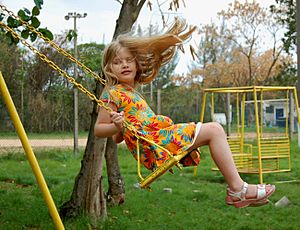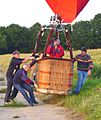Mass versus weight facts for kids

In science, mass and weight are two different things. The mass of an object tells you how much matter is in it. Think of it as how much "stuff" an object is made of.
Weight is different. It measures the force of gravity pulling on an object. So, your weight depends on how strong gravity is where you are. For example, your mass stays the same on Earth or the Moon. But your weight would be much less on the Moon because its gravity is weaker!
Mass is usually measured in kilograms or pounds. For example, one litre of water has a mass of one kilogram. Weight is measured in newtons, which is a unit for force. A one-kilogram object on a table pushes down with about ten newtons of force.
Contents
What's the Difference Between Mass and Weight?
For a long time, people often used "mass" and "weight" as if they meant the same thing. This is because, on Earth, an object's weight is usually related to its mass. If something has more mass, gravity pulls on it harder, so it also has more weight.
However, mass is really about an object's inertia. Inertia is how much an object resists changes to its motion. If an object is sitting still, inertia makes it want to stay still. If it's moving, inertia makes it want to keep moving at the same speed and direction.
According to Newton's second law of motion, if you push an object with a certain force, how much it speeds up depends on its mass. A heavier object (more mass) needs a bigger push to speed up the same amount.
Feeling the Difference Between Mass and Weight
You can actually feel the difference between mass and weight! Try this experiment (with an adult's help if needed):
- Find an object that weighs more than ten kilograms, like a heavy bag or a bucket of sand.
- Hang it from a strong rope that is two metres or longer.
- Now, gently push upwards on the bottom of the object with one finger. What you feel is its weight. This is gravity pulling it down.
- Next, gently push sideways on the object with one finger. Make sure you don't push it so hard that it starts to swing upwards. What you feel now is its mass. This is the object's inertia resisting your push.
Even though the object is hanging and gravity is pulling it down (its weight), when you push it sideways, you feel how much "stuff" it's made of (its mass) trying to stay put or keep moving.
Images for kids
-
Gravity anomalies covering the Southern Ocean are shown here in false-color relief. This image has been normalized to remove variation due to differences in latitude.
See also
 In Spanish: Diferencias entre masa y peso para niños
In Spanish: Diferencias entre masa y peso para niños






